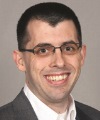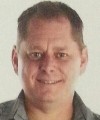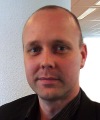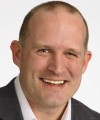Business of Software Delivery Track
 Thomas Murphy Track Chair |
|
The business of delivering software is increasingly adapting agile techniques driven by a need to deliver compelling user experiences in an always on and connected world. This is driving leading IT shops to reconfigure around product teams rather than project teams and is driving tools to support increased collaboration and automation. However, the ability to adopt new practices and tools is a challenge of incorrect expectations and cultural change. This year we will explore how successful teams are connecting business to development and operations to transform from a what will it cost, to a what will it return mentality.
We will explore how good AD life-cycle management practices and tools can aid in overcoming challenges such as: global Agile development, driving successful product delivery in regulated environments, and balancing the expectations of management with the reality of application delivery. How can you transition your organization not just to be agile or lean but to be effective, delivering applications that delight customers and adapt to multiple modes of interaction? Learn from thought leaders and interact with your peers in a fun and interactive environment. |
|
Breakout Sessions
 Dave West Chief Product Office Tasktop |
|
ALM Analyst Panel - chaired by Dave West
|
|
||||
 Mark Wanish Senior Vice President Bank of America |
|
Cultural Change Gains Business Results
|
|
||||
 Michael Rosenbaum Founder & CEO Catalyst IT Services |
|
Empirical Evidence for Productivity Improvements from Co-located, Onshore Agile Teams: A Case Study from a Fortune 500 Sports Apparel Company in Oregon
Catalyst partnered with a Fortune 500 sports apparel company releasing a host of digital products, including wearable technology, a host of mobile applications, and game systems, to deliver these products to market. Three leading offshore firms and one leading domestic firm also worked on the effort. Attend this session to learn how this Fortune 500 company collected the data, and see the actual comparative results for productivity and defect rates across the different delivery models. |
|
||||
 Jim Szubryt Enterprise Workforce Accenture |
|
How Large Global Enterprises can use ALM Tools for Application Delivery
|
|
||||
 Steven Borg Co-Founder & Strategist Northwest Cadence |
|
Metrics that Matter: Improving Lean and Agile, Kanban and Scrum
|
|
||||
 Eric Winquist CEO Jama |
|
Modern Product Delivery: Evolve Your Business for Strategic Advantage
To move fast, teams across the organization must work effectively together. Just as awkward handoffs among define, build and test phases introduce waste and delay, discontinuities with other project teams often stall progress and kill momentum. As ALM tools provide more visibility into project status and key decisions, teams can reclaim the time they would have wasted on status reporting and reapply it to delivering business results. These application development pressures keep business decision-‐makers up at night:
In this presentation, Eric will present fresh market data and describe how large enterprises building complex products are speeding application delivery time and increasing quality to drive real product innovation. Specifically, he’ll explain why embracing change is the one business strategy you should adopt. |
|
||||
 Roy Osherove Author Consultant & Trainer |
|
Notes to a Team Leader
|
|
||||
 Dave Stecher Senior Business Development Engineer PointSource |
|
Overcoming Mobility Challenges
Although all the same lifecycle domains exist, in the excitable haste to bring apps to the market, many of the phases are being either short-changed or ignored completely. Since mobile success relies on a stakeholder's positive perception of the user interface and interactions and the difference between usability and frustration can be a matter of just a few screen pixels, the design phase is critical in the mobile development lifecycle. The gaps between design tools and requirements, however, can cause teams to skip steps in order to avoid the manual efforts needed. Another area primed for evolution is the quality and test domain moving in the support phase. Getting an app deployed is not the end of the story; a smart mobile development lifecycle strategy accounts for repeatable test suites, maintenance, and sustained engineering. Even mature mobility strategies struggle to build integration with their development tools and business processes when bringing these domains together. The Open Services for Lifecycle Collaboration (OSLC) Mobile User Group is beginning to tackle the integration scenarios that limit the ability for organizations to leverage all the benefits of mobile, and to drive these scenarios into OSLC standards. Leveraging our own expertise and what we see with our cross-industry client work, we will discuss the emerging patterns around the mobile development lifecycle, future trends to address gap areas, and community-based standard solutions. |
|
||||
 Zubin Irani CEO cPrime |
|
Principles of Agile Governance in the Enterprise - Recipes for Hybrid Organizations
The principles act as a guide for how to construct new governance recipes for the unique scenarios that cPrime encounters with clients. Often organizations that are growing rapidly, or whose methodologies are in flux, are the ones who seek help with refining their governance practices. cPrime has written a comprehensive white paper, Recipes for Agile Governance in the Enterprise, which illustrates how Agile Governance can be accomplished by defining and using a set of standardized elements: Roles, Ceremonies, Metrics, and Governance Points at the different levels of an organization. |
|
||||
 Chad Albrecht President Centare |
|
Stepping Forward into Modern Business
In this presentation, Chad will review some of the challenges business leaders face today, why they exist and present the “new lens” for capitalizing on them. Focus areas will include
|
|
||||
 Jed Moffitt Direction of IT Services KCLS |
|
Using Agile to Drive Innovation: A Case Study from the King County Library System
This session will highlight the agile transformation of the King County Library System, one of the largest circulating libraries in the United States. Public libraries, and the librarians who form the core of these organizations, are not typically considered early adopters. Indeed, the very role of a public library is in question in a world that includes Amazon and massive amounts of free content. The leadership of the King County Library System took a look at this landscape, and decided to reinvent the public library for the 21st century. But in order to do that, it first needed to transform its delivery framework for the applications technology that drove the organization to make it nimble, effective, and innovative. The story of KCLS’s agile transformation underscores the insight that every company is a technology company. |
|
Lightning Sessions
 Scott Anderson Team Lead Avanade |
|
Agile Transformation of a 20,000 Person Company – a Long Term Journey Over the past few years, demand from customers to run agile projects has steadily increased worldwide. In response to this accelerated demand, in 2012 Avanade, a 20k person strong consultancy focusing on business technology solutions and managed services, launched its worldwide Agile initiative with the objective to build an Enterprise-level Agile capability pervasive throughout all layers of their organization. In the past 18 months, they have been working hard on formalizing and building a core Agile capability with the aim of gradually becoming more Agile – from the consulting force to executive leadership.This session outlines how a consultancy with a global footprint has embarked on this long transformation journey, what has worked and what hasn’t worked, the good and the bad. |
|
 Eric Clayberg Software Engineering Manager |
|
The Three L’s of Leadership Eric Clayberg, featured in a recent Harvard Business Review article on managing at Google, is a Google Great Manager Award winner and manager of the open source Dart Editor project. He will discuss his personal management philosophy and his road from serial entrepreneurship to managing in the rapidly moving environment of Google. An advocate of Google's Project Oxygen model, he distills his philosophy down to what he calls "the three L's of Leadership", Listening, Learning, and Loyalty. |
|
 Arnoud Lems Application Development Avanade Netherlands |
|
Go Live Every Day - How to Speed Up Your Delivery Pipeline One of the challenges of today’s business is getting business value developed by team out to the marketplace to actually deliver the value. In Arnoud's experience there are a lot of barriers to overcome in the delivery pipeline before for example a large insurance company. The late arrival costs revenue to a business and teams bogged down by lengthy go live procedures raise the cost of development. The barriers in and on itself make sense (e.g. security tests), however the delivery pipeline can contain a lot of manual and time consuming steps. So how can you remedy that? How do you orchestrate and automate your delivery pipeline to minimize time spent in that pipeline. Based on the guidance in the book Building a Release Pipeline with Team Foundation Server 2012 (for which Arnoud was on the review committee) and his current experiences with Philips implementing inRelease, Arnoud will take attendees through the steps shortening the length of the delivery pipeline and address issues like how to deal with workflows involving different people. |
s |










